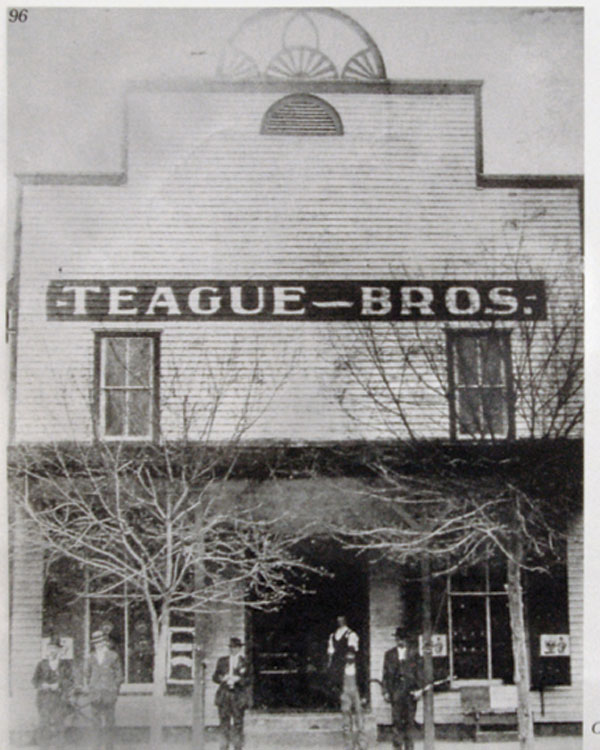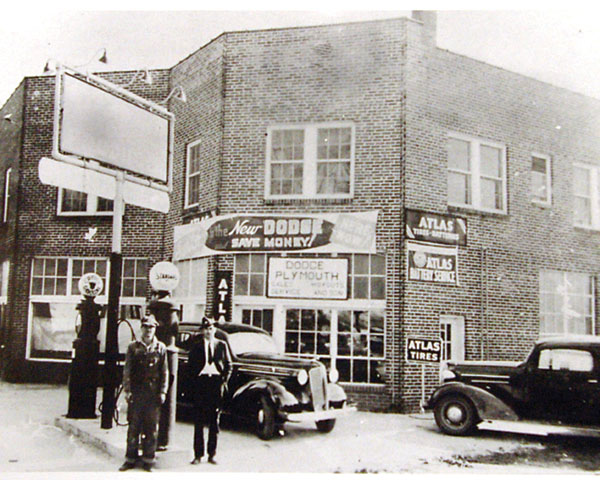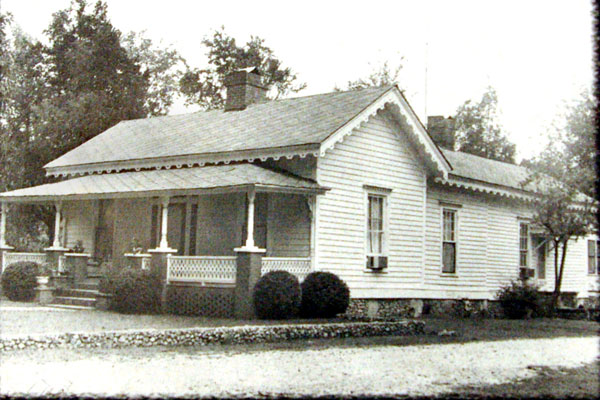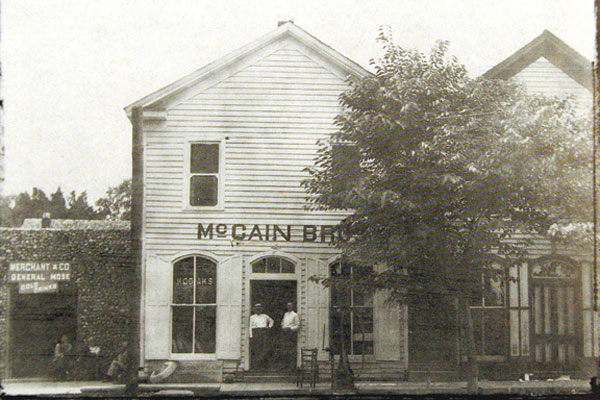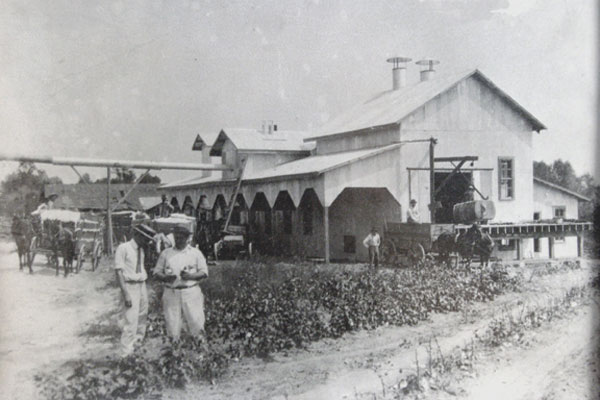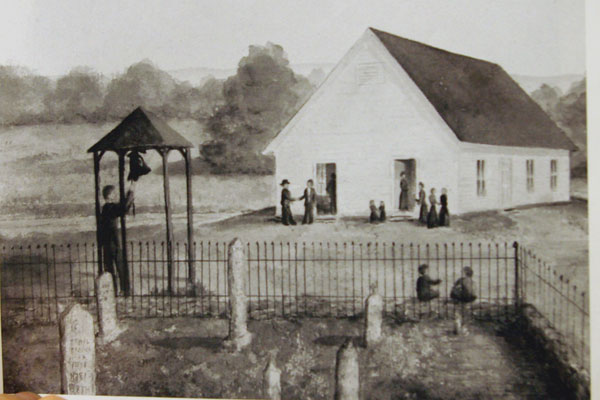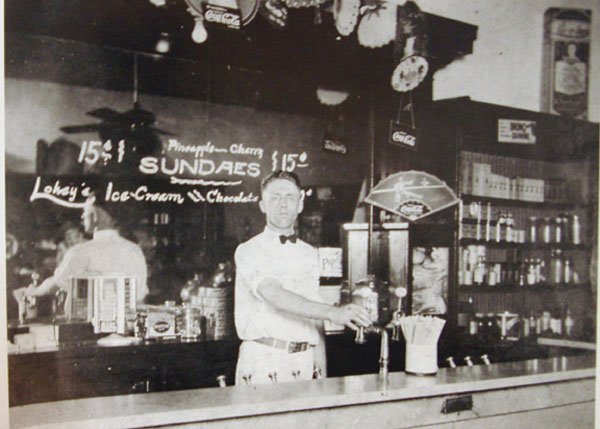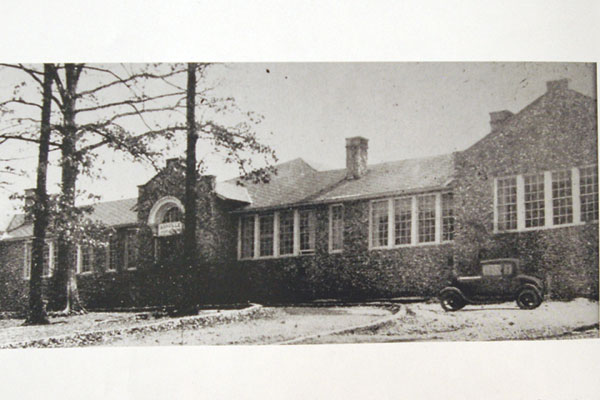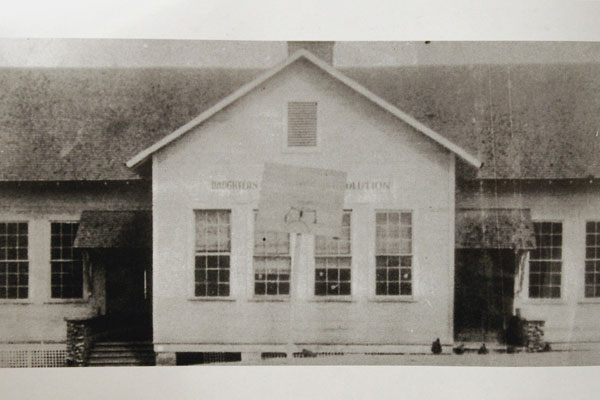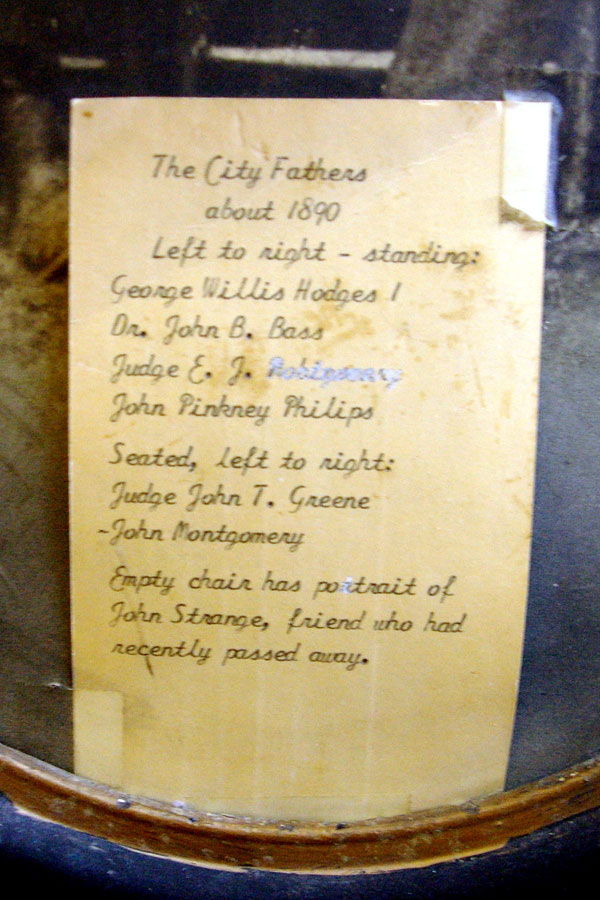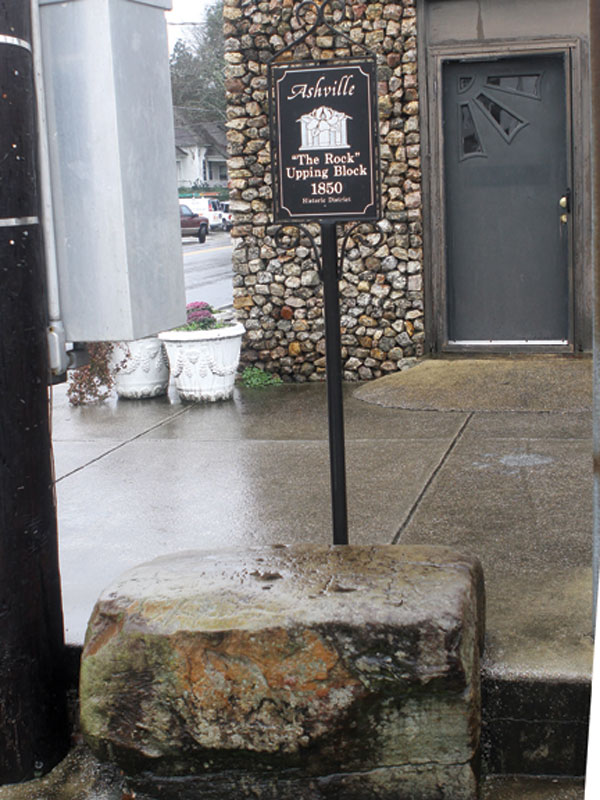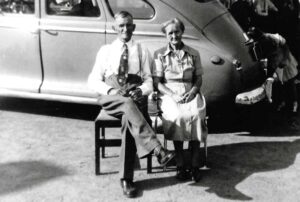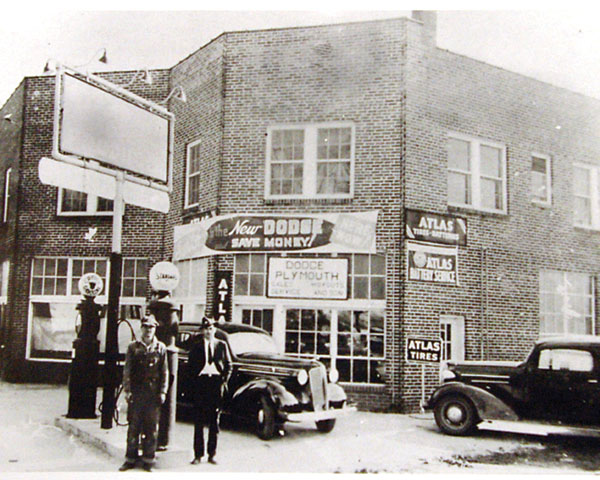
A look back at how St. Clair County got started
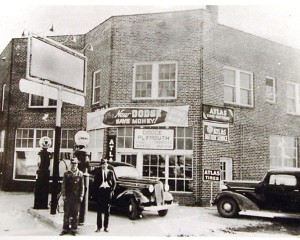 Story by Jerry Smith
Story by Jerry Smith
Photos submitted
Photos by Jerry Martin
A wagon train set out from Georgia in late autumn of 1816, headed westward-ho toward Shelby County, Alabama, to settle with other recent migrants from North Carolina. Among these latest emigrants were John Ash, his wife Margaret, daughters Jane, Samita and Betsy Ann, Margaret’s parents and seven slaves.
Alabama Heritage magazine relates that in January 1817, the travelers stopped for the night at a spring in St. Clair, near the old Creek Indian town of Cataula. Once encamped, the family decided to explore a bit by driving their wagon down an Indian trail (now Beaver Valley Road). While his family was admiring the scenery, John spotted a deer and shot at it.
The noise made the horses bolt, and little 3-year-old Betsy Ann was thrown from the wagon. She died from her injuries a few days later. Understandably, everyone in the wagon train was totally devastated.
Although Shelby County was not far away, the Ash family decided they could never drive off and leave their daughter buried alone in the wilderness, so they bade farewell to their fellow pilgrims and settled in.
Margaret’s father, the Rev. Thomas Newton, built a dogtrot cabin near Betsy Ann’s grave. Now known as the Ash-Newton Cabin, it’s listed as the oldest standing house in St. Clair County.
John Ash was the first white man to officially settle in the area. He homesteaded some property in 1817, acquired legal title in 1820, and built a fine, two-story home which still stands, albeit in pitiful condition, just 1.5 miles west of the present-day junction of US 411 and US 231.
John became the county’s second judge, served three terms as state senator, and still found time to sire and support a family of 15.
In History of St. Clair County, historian Mattie Lou Teague Crow relates that, when organized in 1818, St. Clair County “… reached to the Cherokee Nation, well beyond what today marks the city limits for Attalla and Gadsden.”
Thus, the new city of Ashville would fall near the exact geo-center of St. Clair, making it an obvious choice for a future county seat. The first courts, according to Crow, were held at the home of Alexander Brown, near the Indian village of Littafuchee, about four miles south of present-day Ashville.
The town itself was established on a huge land patent granted to a local investor, Philip Coleman, who laid off a plat map of some 30 acres, including a courthouse square. First known as St. Clairsville, the town was incorporated shortly after Alabama became a state in 1822, and its name was changed to honor its founder, John Ash.
In 1823, Coleman sold Ashville for $10,000 to its five town commissioners, which included Ash. By the following year a log courthouse and jail had been built, not on the square, but across the street, because they were meant to be temporary structures. Nevertheless, these log buildings stayed in use until 1844, when the present day courthouse was built on the square. Crow tells that, until then, the square was used as a “village green” for socializing, horse hitching, local produce marketing and an occasional hanging.
One of the most impressive additions to Ashville was the Dean/Inzer house. Built in 1852 by Ashville merchant Moses Dean, the beautiful Greek Revival home became occupied in 1866 by John Washington Inzer, who would have a marked influence on the development of Ashville, St. Clair and Alabama.
Like Ash, Inzer was a vibrant, ambitious man. Born in 1834 in Gwinnett County, Georgia, his family eventually moved to Eden, near Pell City. At age 20, Inzer studied law, was admitted to the Alabama Bar one year later, and moved to Ashville to practice his profession in 1856. At the ripe old age of 25, John Inzer became St. Clair’s probate judge.
In 1861, he represented St. Clair in the Secession Convention, which was held to decide if Alabama would secede from the Union. Only 27 years old, Inzer was the youngest man to attend this convention, and was the last surviving delegate at his death 66 years later.
John had voted against secession, but like many of his day, willingly joined the Confederate Army. He was quoted as vowing, “… if Alabama should secede … I would go with her and stand by her in every peril, even to the cannon’s mouth.”
From the rank of private, he quickly rose to lieutenant colonel in the 58th Infantry Regiment and served in many bloody battles, including Corinth, Shiloh and Chickamauga.
Taken prisoner at Missionary Ridge, Inzer was held at Johnson Island in Ohio for 18 months. His journal reads, “The Yankees here guarding us have been keeping up a regular fire on us a large portion of the time since we came here. … Such shameless cowards the Yankees are.”
Colonel Inzer’s strength, boldness and intelligence had not gone unnoticed by his enemy. During Reconstruction he was again appointed probate judge, this time by the Union, then later reappointed by popular vote. He became a state senator in 1874 and again in 1890.
Inzer was a trustee of Howard College when it was originally located in Marion, Alabama, serving in that capacity until after the college moved to East Lake in Birmingham. Howard College is now in Homewood and known as Samford University.
A tireless public servant, Inzer was a also a trustee for the Alabama Insane Hospital in Tuscaloosa, later known as Bryce Hospital, and served as Judge of the 16th Circuit Court in 1907-1908.
Colonel/Judge/Senator John Inzer, also known as the Grand Old Man of Alabama, died in 1928 at age 93, a remarkable lifespan for that era.
He lies at rest today in Ashville’s “new” cemetery, a few hundred feet behind his home.
Members of his family occupied the Inzer home until 1987, when it was willed to Camp 308 of the Sons of Confederate Veterans. The home has been diligently restored and currently serves as a living museum in honor of Inzer and his beloved Confederacy. Mrs. Crow published Inzer’s journals as Diary of a Confederate Soldier, now available at Ashville Archives.
Notable figures in Ashville history
Ashville’s first merchant was Archibald Sloan, postmaster and proprietor of a mercantile business on Lot 22 of the new town. Others quickly followed, including merchants, lawyers, doctors, preachers and teachers. Ashville’s first school was established in 1831 as Ashville Academy.
According to Crow, the Academy’s host building was known as Mount Pleasant Meeting House, also shared by Methodist, Presbyterian and Baptist congregations. There was a Methodist church in Ashville as early as 1818, well before the town had a name. Now known as Ashville United Methodist, among its early congregants were many names familiar to St. Clair historians, such as Byers, Robinson, Cather, Box, Embry and its circuit-riding minister, O.L. Milligan.
The two-story Masonic Lodge building, built for Cataula Lodge No. 186, was later used jointly by this Methodist congregation and by the Masons until 1892. The lodge building has an incredible history of its own, having been moved across town twice when its space was needed for other buildings. Both moves were momentous occasions to the townsfolk.
The Baptists built their own sanctuary in 1859, across the road from the Meeting House. Among its clergy were James Lewis, Hosea Holcomb, Sion Blyth and Jesse Collins. The sanctuary was built by Littleton Yarbrough, the same man who designed and built the courthouse and town jail.
According to Mrs. Crow, Yarbrough cut its timbers from his own plantation, hand-planed and shaped each board, hauled it all to the site by ox wagon, and assembled the entire church without a single nail or screw by using hand-carved wooden pegs. Each peg was marked by a Roman numeral matched to its hole.
The Presbyterians built their own edifice in 1879, the Cumberland Presbyterian Church, now a Church of Christ. Its congregation and founders included Rogans, Curriers, Newtons, Fulghums, McCluneys and Oldhams.
When these churches vacated the Academy building, a new school was built in another part of town. John and Lydia Hardwick Vandegrift bought the old building, moved it across town, and converted it into a fine dwelling. Ashville Academy became St. Clair College in 1896 and Ashville High School in 1910.
Mrs. Crow wrote that during Reconstruction after the Civil War, all St. Clair Episcopal churches were closed under martial law because Bishop Richard Wilmer had refused to pray for the President of the United States.
Ashville comes of age
Ashville remained a fine little settlement during its maturing years, according to retired Judge Charles E. Robinson. He tells that, during his childhood, he and his buddies would freely roam around town from early morning until dusk. In fact, he credits his chats with old folks and local lawyers for much of the wisdom he later used on the bench.
Charlie and his cohorts were an inquisitive band, seeking out adventure at every turn, often spying on gypsies who had camped nearby, and sometimes watching the town drunk in the throes of DTs. Robinson said they routinely visited several homes around mealtime and ate where the food looked best. The boys also frequented Teague Hardware and Teague Hotel, as Robinson is related to that family.
Judge Robinson comes from a St. Clair pioneer family of judges and lawyers, and he and son Charles Jr. have a law office in Ashville, where they now serve as third- and fourth-generation attorneys. His father served in the state Legislature in the 1940s, and his namesake grandfather was a US attorney around the turn of the century.
He describes a place northwest of Ashville where his grandfather grew up, called Robinson Hill by the locals, “… There was a fine spring about 250 feet up that mountain. It had a concrete trough which fed water all the way down the hill to the house, where it collected in yet another large trough. … There was a dipper hanging beside it for drinking water. … The overflow ran into a livestock corral, then Lord knows where it wound up.” He adds that his grandmother would catch fish in Canoe Creek, keep them in the trough, then dip out a few when they wanted fish for supper.
Robinson says when his father was practicing law, the courthouse had no air conditioning. During high-profile trials, local folks would congregate outside its open windows to eavesdrop on the process of justice. He also tells of a place just southwest of town called Gallows Hill, where hangings were once held.
Among prominent early Ashville family names known to the judge are Glidewell, Davis, Frazier, Adkins, High, Sullivan, Bowlin, Montgomery, Philips, Embry and Cobb, many of whose descendants are still in the area. Other sources list Ramsey, Tucker, Hodges, Coker and Lonergan.
The 73-year-old Robinson describes the Ashville of his boyhood as a purely-Alabama country town, where relatively few people moved in and, once there, even fewer moved away. Most local folks were farmers, although many worked in Gadsden at Republic Steel and Goodyear. He says they were all decent folks who loved the South, worked hard and respected people of all colors and walks of life.
Historic Ashville today
Like most small towns, local lore abounds. One of the best-known sights is the “Upping Block,” a huge, rectangular chunk of sandstone on the west side of the square that was once used as a stepping stone for ladies to mount horses, a community meeting place, a soapbox for local orators and politicians and, according to local legend, a place where slaves were once displayed for sale.
World-famous archer Howard Hill is buried in the town cemetery, where he lies beside his wife, Ashville’s Elizabeth Hodges. Hill, originally from Vincent, Alabama, did all the fancy bow and arrow work in old movies like Robin Hood, starring Errol Flynn, and other lesser-known films. His archery feats using extremely powerful English longbows of his own making are legendary and unmatched to this day.
Those who wish to pursue Ashville and St. Clair history have a great friend in Charlene Simpson, long-time curator of Ashville Archives, next to the Robinson Law Firm, facing the square. This amazing lady presides over several rooms full of documents and museum pieces. She can guide you through almost any genealogical or historical quest pertaining to St. Clair, with an unrivaled knowledge of historical resources in the area.
Today’s Ashville retains much of its mid-century look as well as plenty of scenic antebellum buildings, historic markers and other souvenirs of simpler days.
It’s well worth a visit.














